Eileen, Ryan and I devoted March 25, 2014, to a long day trip to and from Launceston, visiting (among other things) three very different habitats. Our first stop was just outside the city at the Cataract Gorge, a popular scenic attraction and picnic spot.
Here Ryan was able to get on close terms with a very tame Bennett's Wallaby (Macropus rufogriseus), obviously well used to getting handouts from visitors.
I was more interested in getting close to a Tasmanian Scrubwren (Sericornis humilis), one of the island's endemic birds.
Tasmania' temperate limate does not support a large fauna of lizards, but there are some. All but one are skinks. This is one of the commonest, a Metallic Skink (Niveoscincus metallicus).
This handsome little lizard is, I believe, a Spotted skink (Carinascincus ocellatus), a species endemic to Tasmania. Like all Tasmania's endemic skinks, it gives birth to live young (as does the Metallic Skink, which also occurs in Victoria). Sorry about the chain-link fence, though...
This little fish may not look like much, but it is extremely interesting all the same. The Jollytail or Common Galaxias (Galaxias maculatus) has an astonishing distribution for a freshwater fish. According to FishBase, it can be found in "Australia (including Tasmania), Lord Howe Island, New
Zealand and the Chatham Islands... along the
Chilean side of the Andes near Valparaiso to the southern extremity of
the island chain southeast of Tierra del Fuego,,. on the eastern
side of the Andes in Argentina in isolated lakes (Meliquina, Traful,
Nahuel Huapi, Gutierrez, and Pellegrini) which drain into the Atlantic
Ocean via the Negro River. It occurs on Falkland Islands." How did it get to all those places? For a clear and well-written answer (at least as we understand things now) read here.
The impressive gorge itself is the result of some very severe earthquakes and slippage along fault lines that started happening about 40 million years ago. One would not, I gather, have wanted to be around at the time.
From Launceston we drove north, down the west bank of the Tamar River. Our next stop was the Tamar Island Wetlands, an extensive tract of (fortunately protected) estuarine marsh with a boardwalk that extends from a well-run interpretative centre (the centre photograph) to Tamar Island in mid-river (where we had a picnic lunch, and a fine place it was for one too).
Our first stop was the interpretative centre, where I photographed this Welcome Swallow (Hirundo neoxena).
Then it was off along the boardwalk towards the Island. Eileen went on ahead to arrange our picnic, while Ryan and I strolled at a more leisurely pace, admiring waterbirds on the way.
There were a lot of ducks about: here are, mostly, Maned Geese (Chenonetta jubata) [notice the group in the right foreground] and Chestnut Teal (Anas castanea).
The male Chestnut Teal is one of Australia's handsomest ducks, and a favourite of mine.
The walk out to the island was fairly lengthy (and did try Ryan's patience a bit) but it took us well out over a lot of very nice habitat, including exposed mudflats that bore the marks of previous visitors.
Herons foraged in more open stretches; Here are an Eastern Great Egret (Ardea modesta) and a White-faced Heron (Egretta novaehollandiae), accompanied (in the upper photo) by a Pacific Gull (Larus pacificus).
Here are closer views of the Egret....
...and the heron, the commonest of Australia's herons.
Here, the foraging White-faced Heron is visited by a pair of Chestnut Teal.
The female Chestnut Teal (above) is darker, browner and has less whitish on the face than the otherwise-similar Grey Teal (Anas gracilis). You can see a gang of Grey Teal in the lower photo.
If there is any Australian water bird that provides no identification problems whatever, surely it is the Black Swan (Cygnus atratus). The trouble is, Black Swans are so common that it is easy to take them for granted (though before Europeans discovered it in 1697 they considered a black swan to be a logical impossibility). But, really - is there a more graceful or elegant bird than this?
After our picnic Ryan and I crossed to the far end of the boardwalk, where we could see a distant pair of Australian Pelicans (Pelecanus conspicillatus) near the river's eastern shore, before retreiving Eileen and heading back to the interpretative centre.
On the way back, I finally got a chance to photograph a couple of the dragonflies I had been watching whir past me on our walk. As with so many other animal groups, Australia's dragonflies and damselflies are not quite like those elsewhere. The dominant dragonfly family in the rest of the world, the Libellulidae, is poorly represented here. Other familes, including a few endemic ones, predominate. Tasmania has only 29 species of dragonflies and damselflies, including some highly unusual specialties.
The Blue Spotted Hawker (Adversaeschna brevistyla), though, is a darner (Aeshnidae). It is very similar in appearance to insects I see back home in Ontario, though it is in fact the only species in its genus. Photographing darners in flight is always a trial - one of the consequences of having few libellulids about is that the dragonflies you do see in Australia are less likely to wait around for you to photograph them.
The same is true for emeralds (Corduliidae). This is a Tau Emerald (Hemicordulia tau), told from similar species by (among other things) a pale golden-brown leading edge to the wing and a black mark on the face shaped like the letter "T" (or the Greek letter tau; hence the name). Hemicordulia and the related Procordulia have sometimes been placed in their own, purely Australian family (Hemicorduliidae), but recent molecular studies suggest that they fit better within the typical emeralds.
The dragonflies provided a nice bonus, at least for me, to our Tamar Wetlands stop. We soon set off again - but only after a Wedge-tailed Eagle (Aquila audax), Australia's largest bird of prey, soared high over our heads.
From the wetlands we made a stop at an indoor platypus and echidna centre at the river mouth, where Ryan got a guided tour (as he was very anxious to see an echidna) while Eileen and I ate ice cream (I had seen a wild platypus, as well as zoo animals, before, and hoped still to see wild echidnas in the course of our trip, so I was not interested in paying to see captives). Our final nature stop took us on a long drive to Narawntapu National Park, where we were to have a bit of an adventure (but not the one we expected).
Narawntapu is sometimes called the the Serengeti of Tasmania, and it is easy to see why: its broad, grassy plain does recall the expanses of the real thing. A big difference is that most of the animals that populate the Tasmanian plains are not active until dusk, so there wasn't much to be seen even though we arrived quite late in the day (well after the ranger station had closed).
Birds were about, though: this is a Black-faced Cuckoo-Shrike (Coracina novaehollandiae), the commonest of Australia's large cuckoo-shrikes.
When I first visited Australia, the bird books of the time listed three species of crow: the Australian Raven (Corvus coronoides), the Torresian Crow (then called the Australian Crow) (C. orru), and the Little Crow (C. bennetti). In 1967, the year before my first visit, Ian Rowley published a paper recognizing a fourth species living undetected among the others, the Little Raven (C. mellori). In 1970 he added a fifth, the Forest Raven (Corvus tasmanicus), from isolated areas in southeastern Australia, where it is uncommon and decreasing, and Tasmania, where it is not only common but is the only crow (so no ID worries!). It is the largest and heaviest-billed of the lot.
We found this Forest Raven feeding by the roadside. It appeared to have lost much of the feathering around its face, whether through wear, disease or something else I cannot tell.
Laughing Kookaburras (Dacelo novaeguineae) are quintessentially Australian, but they are not native to Tasmania. Instead they were introduced here, where they are now common, widespread and, like many another alien species, a threat to some of the native fauna. They are more secure in Tasmania, in fact, than in their native mainland range, where they are, according to a 2015 report, in decline.
Silvereyes are another widespread Australian bird (Zosterops lateralis), but the Tasmanian breeding population - the nominate race, as it happens - is distinctive: larger, darker, with broad, richly chestnut flanks. Tasmanian Silvereyes migrate to much of eastern Australia in the winter.
On my first trip to Tasmania in 1974, I was better able to concentrate on birding and managed to see all of Tasmania's endemic birds except one, the Clinking Currawong (Strepera arguta). I took some comfort in the fact that arguta was later reduced to being only an island subspecies of the Grey Currawong (Strepera versicolor), a bird I had seen on the mainland. Nonetheless, I was very pleased indeed to turn up one of them (now, officially, Strepera versicolor arguta) on our drive through the park (which is why I am subjecting you to this less-than-sharp photo). Grey (or Clinking) Currawongs are shyer and less obvious than either the Pied Currawong (S.graculina) on the mainland or the Black Currawong (S. fuliginosa) on Tasmania. I am always happy to encounter one - particularly in this case!
Our
drive through the park took us to an attractive stretch of beach, where
we took turns posing for the camera (Ryan is the photographer in the
lower shot). Here, though, our little idyll was interrupted. we met a young couple who told us that their van had just been broken into by thieves, who had smashed a window and made off with their valuables while they strolled on this very beach (in fact, we may have seen the culprits; the only other vehicle we met in the park was heading, rapidly, in the opposite direction). We decided that waiting around till dusk, practically alone, might be a foolish move, and that we had better get back into more settled country with all speed (we had a child with us, after all).
So we forwent our chance to see the herds of wombats and kangaroos that apparently emerge onto Narawntapu's plains in the fading light. Instead we were treated ,as we left, to numbers of Bennett's Wallabies feeding unconcernedly by the roadside as we drove past.
Occasionally one stopped for a closer look at us - quite without interest, though, in learning whether we were naturalists, tourists, or just another carload of thieves.




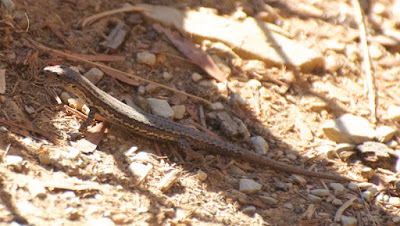

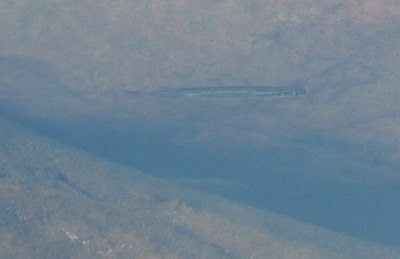







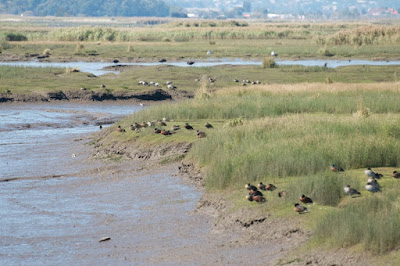













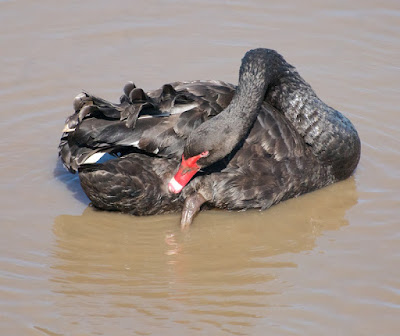

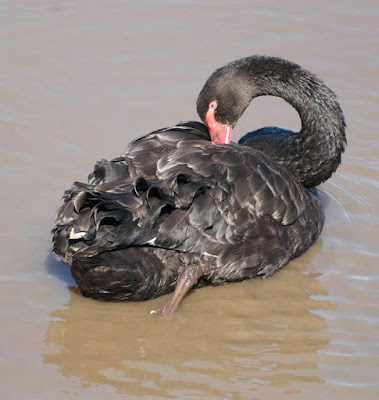
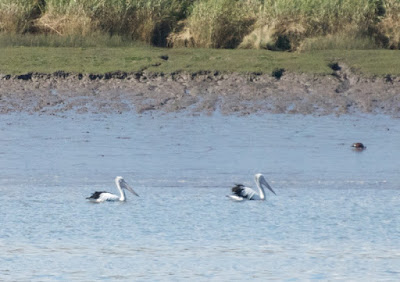










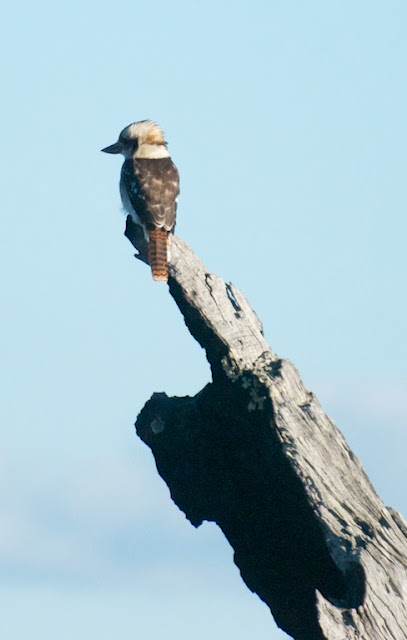







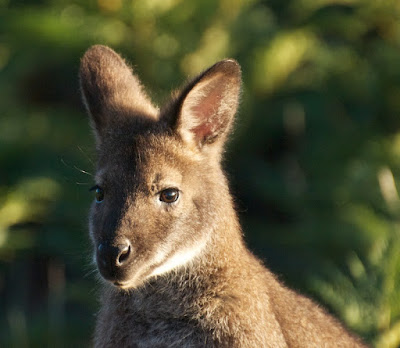

Hello
ReplyDeleteGreetings from Waterloo Ontario Canada
Just finished to read your blog, enjoyed your beautiful pictures with the excellent information, I always appreciate. Perhaps I can come to Australia and enjoy the nature of this beautiful country for myself.
Wish you a very Happy New Year.
Gisela
Greetings back from Mississauga, just down the road from you - thanks for the kind words, and Happy New Year yourself!
Delete